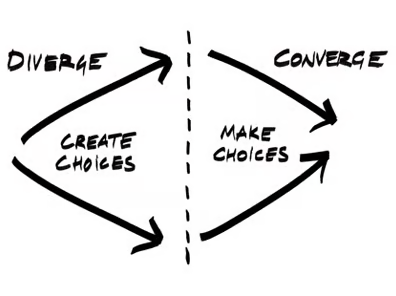Building inclusive product teams

Product teams are in the business of problem-solving. They need to break new ground, experiment and find cutting-edge solutions with brand-new technology. In short, they need to be innovative. And which teams innovate better? Diverse and inclusive ones. Here’s how to build inclusive and diverse product teams that spark creativity.
There’s more and more evidence that diverse companies outperform non-diverse ones. This is especially true for innovation and accessing new markets.
Recent McKinsey research showed that diverse teams are 39% more likely to outperform financially their competitors. Another study found that diverse teams are 90% more likely to take risks, and 70% more likely to report capturing a new market.
This is especially important for product teams to be aware of. We’re in the business of problem-solving, so we need to build teams that can innovate.
Why DEI is important for product
Product teams aim to solve the biggest set of unmet customer needs with a single, scalable product. Once we find Product-Market fit, we explore better solutions to deeper problems, broadening our customer base and market share.
But if we’re only doing basic problem-solving, we only provide limited value. If we’re not developing innovative solutions, it’s easy for someone to muscle in on our space.
The typical product team is cross-functional. It might encompass product management, engineers, designers, data and more. We already know there’s power in collaborating with different people with different mindsets. Innovation comes from inside your team. And which teams innovate better? Diverse ones.
Creative problem solving
One way to think about a team’s problem-solving abilities is divergent vs. convergent thinking.
Divergent thinking is where innovation happens. This is where our ideas differ, where people think outside of the box, and where everyone brings something unique to the table. Convergent thinking on the other hand takes all those ideas and narrows them down.

But what we converge on is limited by the ideas you generate in the first place. Teams where everyone thinks alike – homogenous teams – generate fewer ideas than diverse ones. With fewer variables in the mix, there is less divergence, and therefore less potential for innovation.
Teams generally aren’t even aware that their capacity for innovation is limited. That’s why they’re known as “blind spots” — we don’t know what we can’t see. But it’s not all bad for homogeneity. Teams consisting of similar people have an advantage when it comes to convergent thinking. They’re more aligned by default, so it’s quicker for them to agree. It’s a blessing and a curse. Homogenous teams might gel better, but nobody has ever disrupted an entire industry by colouring inside the lines.
The more a team can think outside the box, generate divergent ideas and still narrow it back down and converge, the better they’ll collaborate and innovate.
Diverse and inclusive teams
When it comes to creativity and innovation, diverse and inclusive teams are ahead of the game. Right now, diversity and inclusion is a competitive advantage. But that won’t be the case for long. Sooner or later, it will be table stakes. The workforce of today is increasingly diverse and companies need to reflect that diversity, otherwise they’re missing out on the best people.
Studies show that diverse teams produce 19% more revenue from innovation compared to homogenous teams.
But diversity isn’t the complete picture. Without inclusion, teams lack the trust and psychological safety to achieve shared goals. Many teams struggle to strike the balance, so what makes inclusion so hard?
Noise and bias
The world is a noisy place. Every second, we’re faced with 11 million pieces of information to sort through. There’s no way to do this in a logical, rigorous way, so our brain uses shortcuts to make it easier for us. If you were constantly aware of everything happening around you, you wouldn’t be able to get anything done.
Up to 99% of information is filtered out from our conscious minds without us even knowing. That’s where unconscious bias is hiding. And since it’s unconscious, it’s hard to be aware of it, let alone change it.
But that doesn’t mean that these biases aren’t powerful. Research shows our internal biases influence who feels they can speak up in a meeting, who gets heard when they do, who gets offered challenging opportunities and who gets promotions.
Unconscious bias training isn’t the answer. Research shows it’s at best pointless, and at worst harmful. To change behaviours, we need to focus on changing the structures rather than individuals. When we’re under pressure (as product teams often are), we don’t remember learned behaviours, we fall back on defaults. There needs to be systems, processes and procedures in place to catch us.
How to change structures
By changing structures, you can deliver a huge impact. Take our customer Beamery for example. In 2022, Beamery doubled in size whilst improving their diversity and inclusion. And they developed an innovative new product that helped them secure major investment.
They focused on building fair structures around the areas that needed it most: pay, promotion and inclusion. For example, they developed a progression framework, growth conversation guides for managers, a performance review committee and much more.
By setting up the tentpoles for fairness, Beamery could underpin diversity and inclusion. Because you can’t have either without equity.
Tips for product teams
There are no silver bullets when it comes to DEI, and your strategy should always be aligned with your specific context. But here are a few tweaks with an impressive ratio of effort to value that are universally applicable to product departments.
1) Encourage constructive friction
Organisational friction happens when individuals try to achieve collective aims in a rapidly changing, complex environment where the future is unknown. Sound familiar? That’s us and literally every tech business.
Until we’re all replaced by robots, organisational friction is inevitable. We will never be totally free of friction, and that’s fine. Conflict can help us iron out disagreements and fill gaps in our thinking.
But when friction happens, we might feel like things have gone wrong when in fact everything has gone normally. For conflict to be productive, employees need to know that it’s natural (even encouraged) in innovative teams.
So how can product managers foster productive conflict? It doesn’t need to be complex. Fixes as simple as a checklist can be powerful tools. Run through these tips in your next meeting:
- Share the meeting agenda in advance and ask attendees to develop their own position on decisions that need to be made.
- Use breakout rooms — people may feel more confident sharing dissenting opinions in smaller groups.
- Explicitly ask for different perspectives: “What can we do differently to get us closer to our goals as a team?” “Are there any points we haven’t considered yet?”
- Have managers speak last — people tend to be swayed by the most senior voice in the room.
2) Structured hiring
The longer you run an unstructured hiring process, the harder you make it for yourself. I’ve been on both sides of the hiring frenzy; when you’re desperately trying to make hires en masse and when you’re overloaded with work and trying to hire anyone to fill the gap.
With a few basic foundations of fair hiring, you significantly increase your chances of hiring the best person for the job. So here are a few of the basics to improve your hiring process:
- Hire for skills rather than experience. If you only look for people with direct industry experience, you immediately narrow the pool of candidates. You also miss out on the opportunity to learn from beyond your industry. Instead of discounting any candidate without 3 years in a tech company, define the skills necessary for success and hire for those instead.
- Use structured interviews. Before the interviews, define a set of relevant questions that give you insight into the desired characteristics. Ask all candidates these questions in the same order and stick to the script! Don’t be tempted to veer off-topic if someone shares a similar hobby to you — this is exactly how unconscious bias can skew your judgements.
- Score candidates consistently. Once you’ve defined your desired criteria, identify how you will measure them. We recommend using a rating scale of 1-5 with examples for each point on the scale. For example, if one of your criteria is “Awareness of our tech stack”, 1 would be no prior experience, and 5 would be familiarity with all of your tools.
3) Run better performance reviews
Do you use employee self-evaluations as part of your performance reviews? If so, you could be introducing bias into the picture. Studies have shown that when managers see self-evaluations in advance, they become an anchor, shifting managers’ own judgements. This happens without us even realising it.
But luckily, anchoring is easy to avoid. Make this simple tweak to your performance review setup:
- Include a word count at the top of the review page to nudge managers to give all employees equal detail in their reviews.
- Have managers fill in and submit their own employee evaluations first.
- Then, send employees their self-evaluation forms to complete.
- Once both evals are complete, managers can review the self-evaluations.
Improve equity through behavioural design
The path to diversity and inclusion is through equity. Equitable systems benefit everyone. All the recommendations in this post empower people to do their best work. Even if your team is homogenous at the moment, you’ll benefit from putting these practices into place. And when you do add people who diverge from your norms, you’ve got a bedrock of fairness to work from.
When you create an inclusive environment for people who are different from one another, they are already generating the kind of productive friction that lights a match.
Backing it up
Anand, R., & Winters, M. F. (2008). A retrospective view of corporate diversity training from 1964 to the present. Academy of Management Learning & Education, 7(3), 356-372.
Bohnet, I. (2016) How to Take the Bias Out of Interviews. Harvard Business Review.
Correll, S. (2017) Reducing Gender Biases In Modern Workplaces: A Small Wins Approach to Organizational Change. Gender & Society 13:6
Deutsh, W. (2019) Innovation: What’s Diversity Got to Do with It? Chicago Booth Review.
Epley, N. & Gilovich, T. (2006) The anchoring-and-adjustment heuristic: Why the adjustments are insufficient. Psychological Science, 17(4), 311-318.
McKinsey & Company (2023) Diversity matters even more: The case for holistic impact.
Morse, G. (2016) Designing a Bias-Free Organization. Harvard Business Review, 94(7/8), 62-67.
Payne, H. J. (2014). Examining the relationship between trust in supervisor–employee relationships and workplace dissent expression. Communication research reports, 31(2), 131-140.
Purkiss, S. L. S., Perrewé, P. L., Gillespie, T. L., Mayes, B. T., & Ferris, G. R. (2006). Implicit sources of bias in employment interview judgments and decisions. Organizational Behavior and Human Decision Processes, 101(2), 152-167.
Tjosvold, D. (1991). Rights and responsibilities of dissent: Cooperative conflict. Employee Responsibilities and Rights Journal, 4(1), 13-23.